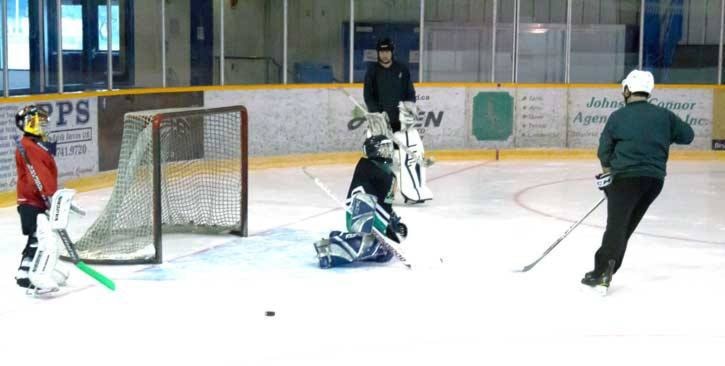A sure sign of the end of summer vacation is the start of hockey camps and schools, and this week, Aug. 9-15, is the harbinger of hockey season as kids wanting to hone their hockey skills descend on the arena to train with Black Elk Hockey Camp.
The first of two hockey training camps planned for Stettler before September, Black Elk – which offers week-long hockey camps all over central Alberta – is the first chance for kids to get back on the ice since the end of hockey last spring.
Jay Boyson and Brad Burns are running the camp in Stettler with the aid of camp trainers and local hockey-playing teenagers recruited to help teach the different groups.
"It's great to have the local kids involved," Boyson said. "They're learning how to coach and they're getting paid, and they love that."
Boyson, who when he's not training kids in hockey, is training them in the classroom. His regular job is as a teacher. He's been with Black Elk now for four years.
"I'm a teacher by trade, so obviously I enjoy kids," he said. "I find it's very similar to teaching, just in a hockey (setting) rather than a classroom."
A mix of dryland and ice skills are taught to groups of kids, which have been broken down by age, Boyson explained.
Off the ice, students do dryland training on the soccer field next to the arena, and to give them a small break from hockey activities but work on building teamwork skills, activities like soccer and ultimate frisbee are woven into the camp.
On the ice, students work on their powerskating skills, the quick and powerful skating abilities that let them cross the ice quickly in pursuit of the puck. Also important are cornering and stopping skills, which are part of the powerskating curriculum.
Ice skills are taught, and consist of combining the powerskating skills with skills like stickwork, strategy and defensive play, Boyson explained.
In the red arena, which hasn't had ice laid yet, students play ball hockey to work on their stickwork, though the legwork is totally different from skating, Boyson noted.
"It's running, not gliding," he said.
Goalies receive specific goalie training, too, since the type of gear and the type of skates goalies use are different.
"Goalies have (skate) blades that are really low, while others have higher ones that offer more stability," Boyson said. "The way goalies skate is entirely different."
Chalk-Talk is classroom sessions, with the use of whiteboards and videos, that are designed to help players visually see strategy.
"When they see it in the videos and on the whiteboard, it just 'clicks,'" Boyson noted. "It's not something you can teach on the ice.
Roughly 80 kids are taking part in this week's school, which also includes scrimmage sessions – the actual playing of hockey – where students can put their new skills to work.
"It's a good size class, and it keeps us busy," Boyson said.
